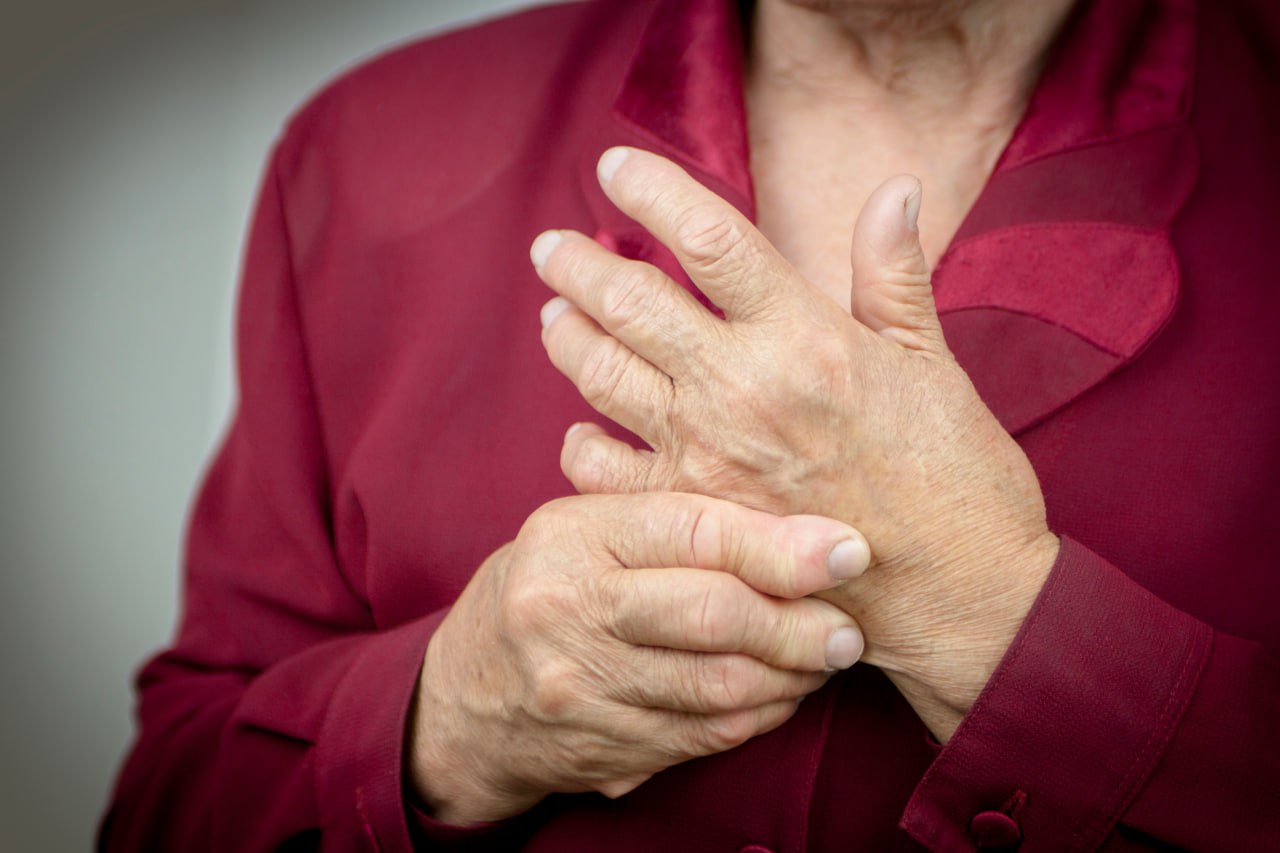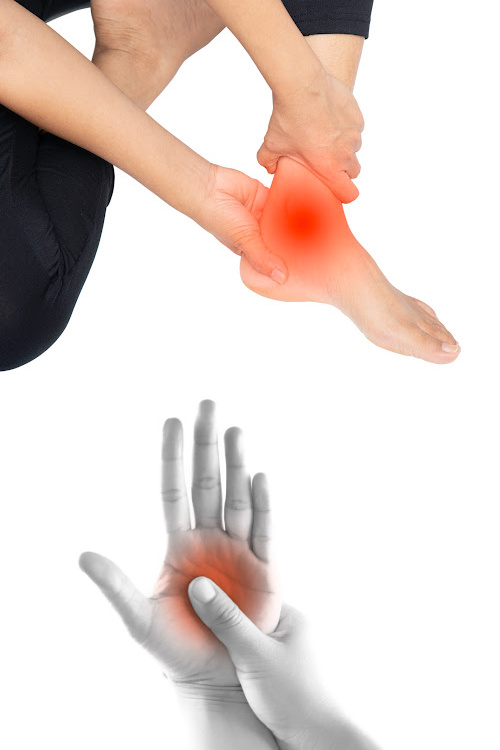Muscle atrophy (or wasting) is a common condition affecting millions of people worldwide. While there are various reasons why muscles may begin to atrophy, it also occurs naturally with age. It is estimated that muscle mass decreases by approximately 3-8% per decade after the age of 30, with the rate of decline increasing after 60.
Muscle atrophy can occur in different parts of the body, with the legs being one of the most commonly affected areas. This condition can cause significant pain and discomfort, making daily activities challenging. However, there are ways to manage your pain and promote recovery, which are explained in this article.
What Is Muscle Atrophy?
Muscle atrophy is a condition characterized by a reduction in muscle mass, resulting in weakness and loss of function in the affected muscles. While it can develop in any muscle in the body, it most commonly occurs in the limbs, especially the legs. Leg muscle atrophy can lead to difficulties in walking, standing, and performing daily activities.
Leg Pain Resulting From Muscle Loss
Muscle atrophy in the lower legs can present various symptoms, including:
- Weakness: The affected leg may feel weak and struggle to bear weight, making it difficult to walk or stand for extended periods.
- Numbness and tingling: Nerve damage, often due to reduced blood supply to the muscles, can cause numbness, tingling, or a burning sensation in the affected leg.
- Asymmetry: One leg may appear noticeably smaller than the other due to muscle wastage and loss of muscle mass.
- Difficulty walking and balancing: Decreased strength and function in the leg can impair walking and balance, leading to a higher risk of falls and injuries.
Why Do Muscles In The Legs Experience Atrophy?
Muscle atrophy can develop gradually over time or occur suddenly. In the case of lower leg muscle atrophy, various factors may contribute to the condition, including:
- Sedentary lifestyle: Prolonged inactivity and a lack of physical exercise can lead to muscle atrophy, as the leg muscles weaken and deteriorate from infrequent use.
- Injuries: Damage to the leg muscles or nerves can disrupt normal function, resulting in a loss of strength and muscle mass.
- Aging: Natural aging processes lead to a decrease in muscle mass, which can be exacerbated by a sedentary lifestyle, contributing to muscle atrophy in the lower legs.
- Malnutrition: Inadequate nutrition, especially insufficient protein intake, can cause muscle loss. Deficiencies in essential nutrients like calcium and vitamin D further contribute to muscle atrophy.
Possible Conditions Linked To Muscle Loss In Lower Legs
Various medical conditions can lead to muscle atrophy in the lower legs, including:
Peroneal Nerve Dysfunction
Also known as peroneal neuropathy, this condition affects the peroneal nerve in the leg, which is responsible for movement and sensation in the foot and lower leg. Damage or compression of this nerve can cause muscle weakness and atrophy.
Rheumatoid Arthritis
This autoimmune disorder causes inflammation and joint destruction, including in the lower legs. Chronic inflammation from rheumatoid arthritis can lead to muscle atrophy and weakness due to reduced physical activity.
Peripheral Neuropathy
This condition involves damage to the peripheral nerves, which control sensation and movement in the limbs. Diseases like diabetes or alcoholism can cause peripheral neuropathy, resulting in muscle atrophy and weakness in the lower legs.
Multiple Sclerosis
This chronic neurological disorder damages the protective covering of nerve cells in the brain and spinal cord, disrupting communication between nerves and muscles. Multiple sclerosis can lead to muscle atrophy, particularly in the lower limbs.
How The Diagnostic Process Works
When diagnosing muscle atrophy in the lower legs, your healthcare professional will start with a comprehensive physical examination and symptom assessment. They will also review your medical and family history to uncover potential underlying causes. Based on this initial evaluation, a range of diagnostic tests may be recommended, including:
- Blood tests: These tests are conducted to identify any underlying medical conditions or nutritional deficiencies that could be contributing to muscle atrophy. They can detect various markers, such as vitamin and mineral levels, hormonal imbalances, and signs of systemic diseases.
- Imaging studies: Utilizing advanced imaging techniques like X-rays, MRIs, or CT scans, these studies provide detailed visuals of the lower leg structures. They can reveal structural abnormalities, injuries, or degenerative changes in muscles, bones, and connective tissues that may be causing or contributing to muscle atrophy.
- Electrophysiological tests: These tests measure the electrical activity within muscles and nerves to assess their function. Techniques such as electromyography (EMG) and nerve conduction studies can pinpoint nerve damage, muscle disorders, and other dysfunctions that might be leading to muscle atrophy.
- Tissue biopsy: In certain cases, a small sample of muscle tissue may be taken for microscopic examination. This biopsy can help identify inflammation, infections, mitochondrial diseases, or other pathological changes within the muscle that contribute to atrophy. It provides a direct look at the cellular and molecular status of the muscle tissue.
Common Approaches To Treating Muscle Atrophy
The treatment for muscle atrophy in the lower legs will depend on the underlying cause and the severity of the condition. Common approaches include:
Medications
To manage symptoms, doctors may prescribe medications such as corticosteroids, immunosuppressants, or pain relievers.
Corticosteroids help reduce inflammation and suppress immune system activity, while immunosuppressants can be beneficial in cases where autoimmune conditions are contributing to muscle atrophy. Pain relievers, whether over-the-counter or prescription, can help manage pain and improve the quality of life.
Physical Therapy
A tailored physical therapy program can help improve muscle strength, flexibility, and function. Therapists design exercises specifically aimed at targeting the weakened muscles and preventing further atrophy.
This may include strength training exercises focused on building muscle strength and endurance, range-of-motion exercises to maintain flexibility and mobility in the joints, and functional training designed to improve the ability to perform daily activities.
Surgery
For more severe cases, surgery may be recommended to address underlying issues such as nerve compression or structural abnormalities.
Surgical options can include nerve decompression to relieve pressure on compressed nerves, muscle repair procedures to fix torn or damaged muscle tissue, and tendon transfers, which involve repositioning tendons to improve muscle function.
Assistive Devices
In some cases, using braces, orthotics, or other assistive devices can help provide support and improve mobility.
Braces can support weak muscles and joints, orthotics such as custom-made insoles or shoes can improve walking and balance, and mobility aids like canes, walkers, or wheelchairs can assist with movement.
How We Relieve Leg Pain Caused By Muscle Loss
At NextPain Care, we understand the challenges of living with muscle leg atrophy. Our approach focuses on providing minimally invasive treatments to manage your pain effectively. We start with non-invasive methods such as behavioral health, physical therapy, diet, and exercise, generally achieving significant improvement in 50% of our patients.
If initial treatments do not fully alleviate your symptoms, our team will guide you through your options, introducing targeted treatments. For more severe cases, we offer advanced, minimally invasive procedures to address persistent or worsening symptoms, aiming to effectively manage symptoms and ensure patient comfort.
Our multidisciplinary team develops personalized care plans tailored to your specific needs while creating a compassionate and supportive environment to help you navigate the challenges of leg muscle atrophy.
We Manage Leg Pain Caused By These Conditions
At NextPain Care, we understand how debilitating leg pain can be. Our experienced team is dedicated to providing effective treatment for a wide range of conditions that cause leg pain.

Rheumatoid Arthritis Pain Treatment
Rheumatoid arthritis can be a debilitating and painful condition that causes swelling, joint damage, and immobility. NextPain Care offers a comprehensive approach to treating the pain associated with rheumatoid arthritis and the condition itself. We aim to...

Peripheral Neuropathy Treatment
Peripheral neuropathy is a condition that can cause severe pain, impacting daily life. At NextPain Care, we use evidence-based practices to provide relief from the painful symptoms of peripheral neuropathy, adhering to the highest standards set by medical...
Discover Relief Options For Chronic Leg Discomfort
Muscle atrophy in the lower legs can be truly challenging, impacting your daily life with pain and weakness. At NextPain Care, we empathize with these struggles and are here to offer personalized, evidence-based treatments designed to fit your unique needs. We start with conservative approaches such as physical therapy and lifestyle adjustments, grounded in the latest research and guidelines to ensure effective and compassionate care.
If these initial treatments don’t fully relieve your symptoms, we provide advanced options like neurostimulation to tackle persistent issues. Our multidisciplinary team creates tailored care plans, blending various therapies to support your recovery and improve your overall well-being.
Reach out to us today to see how we can help you manage muscle atrophy in the lower legs and enhance your quality of life in a supportive and caring environment.
Get to the root of your leg discomfort with our expert care.

